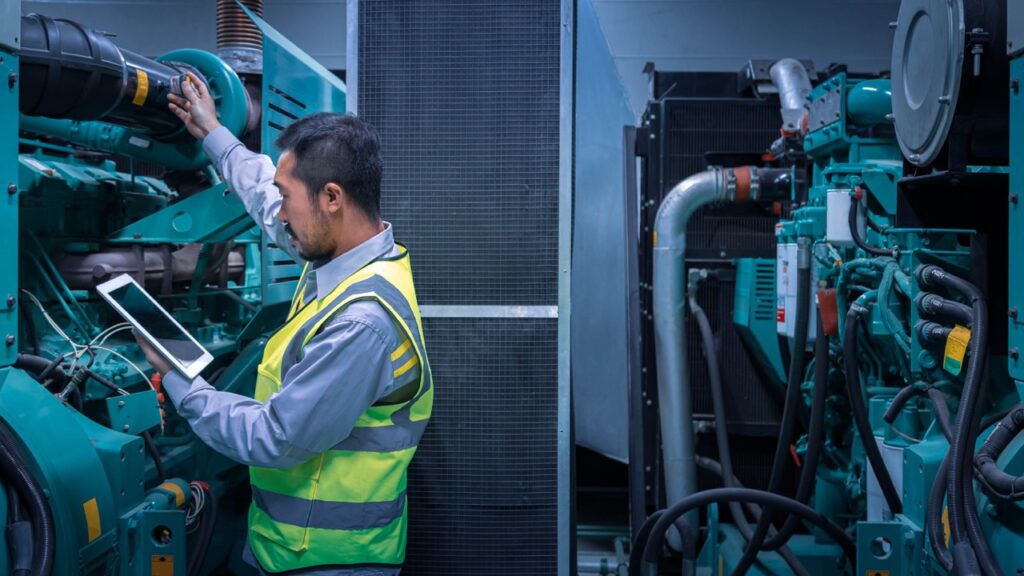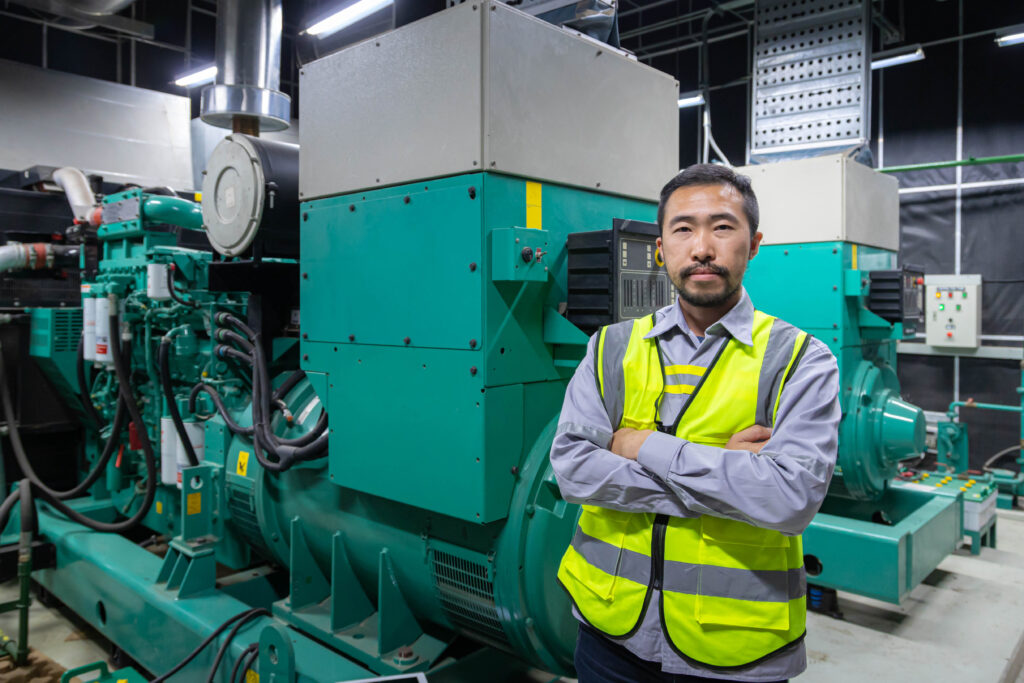Is your company suffering from unexpected power outages? Imagine a crucial production run brought to a halt, orders delayed, and productivity dropping to an all-time low. This nightmare scenario can cause panic for any business. A reliable gas generator can save the day, ensuring seamless operations regardless of external power supply issues. But how do you start one?
Starting a gas generator may seem like a daunting task, but with the right knowledge, it can be as straightforward as flipping a switch. In this guide, I’ll walk you through the essential steps to get your gas generator up and running smoothly.
By the end of this post, you’ll be a pro at starting a gas generator, ensuring your business never has to face unexpected power outages again.

What is a Gas Generator?
A gas generator is a device that converts natural gas or biogas into electrical energy. It is an excellent backup power source, particularly for industries where continuous power supply is critical. These generators are popular due to their efficiency and relatively low environmental impact compared to traditional diesel generators【source】.
Why Choose a Gas Generator?
Gas generators offer several advantages over other types of generators. They are generally more cost-effective, have lower emissions, and can run on various fuels like natural gas or biogas. Moreover, they are quieter, making them suitable for urban and industrial environments【source】.

Steps to Start a Gas Generator
1. Safety First!
Before starting the generator, ensure that all safety protocols are in place. This includes wearing protective gear, checking for any gas leaks, and ensuring the generator is placed in a well-ventilated area. Safety should always be your top priority.
2. Check Fuel Supply
Ensure that the fuel supply, whether natural gas or biogas, is adequate and properly connected. A reliable fuel supply is critical for the continuous operation of the generator. Inspect the fuel lines for any signs of wear or damage to avoid leaks.

How to Inspect and Maintain the Generator?
3. Inspect Oil Levels
Check the oil level in the generator. Low oil levels can cause severe damage to the engine. Refer to the manufacturer’s manual for the recommended oil type and fill it to the appropriate level if necessary【source】.
4. Battery Check
Ensure that the generator’s battery is fully charged. A weak or dead battery can prevent the generator from starting. Regularly check and maintain the battery to avoid any starting issues【source】.

What are the Initial Startup Steps?
5. Prime the Engine
Priming the engine helps to prepare it for starting. This process involves pumping fuel into the engine to ensure it has enough fuel to start. Follow the manufacturer’s instructions for priming the engine correctly【source】.
6. Turn on the Fuel Valve
Turn on the fuel valve to allow gas to flow into the engine. This step is crucial as it ensures the engine receives a continuous fuel supply once it starts running【source】.

How to Start the Generator?
7. Set the Choke
If the generator is cold, set the choke to the ‘closed’ position. This helps to create a richer fuel mixture, which is necessary for starting a cold engine. For a warm engine, the choke should be in the ‘open’ position【source】.
8. Turn the Ignition Switch
Turn the ignition switch to the ‘on’ position. Some generators have a key start, while others might have a button or a pull cord. Follow the specific starting procedure for your generator model【source】.

What to Do Post-Startup?
9. Warm-Up the Engine
Allow the generator to run for a few minutes to warm up. This ensures that the engine reaches the optimal operating temperature and can handle the electrical load efficiently【source】.
10. Transfer the Load
Once the generator is warmed up, you can transfer the electrical load to it. This involves switching the power supply from the main grid to the generator. Ensure that the transfer is smooth to avoid any power surges【source】.

How to Maintain Your Gas Generator?
11. Regular Maintenance
Regular maintenance is crucial for the longevity and reliability of your gas generator. This includes routine oil changes, filter replacements, and general inspections. Keeping a maintenance log can help track when services are due【source】.
12. Professional Servicing
In addition to regular maintenance, have your generator professionally serviced at least once a year. Professional technicians can spot potential issues before they become major problems, ensuring your generator is always in top condition【source】.

Conclusion
Starting a gas generator might seem challenging initially, but with the right steps, it becomes a routine task. Remember to prioritize safety, conduct regular maintenance, and follow the manufacturer’s guidelines. With a reliable gas generator, you can ensure uninterrupted power supply for your business, keeping operations smooth and efficient.
That’s it! Happy generating and may your business always stay powered up!


